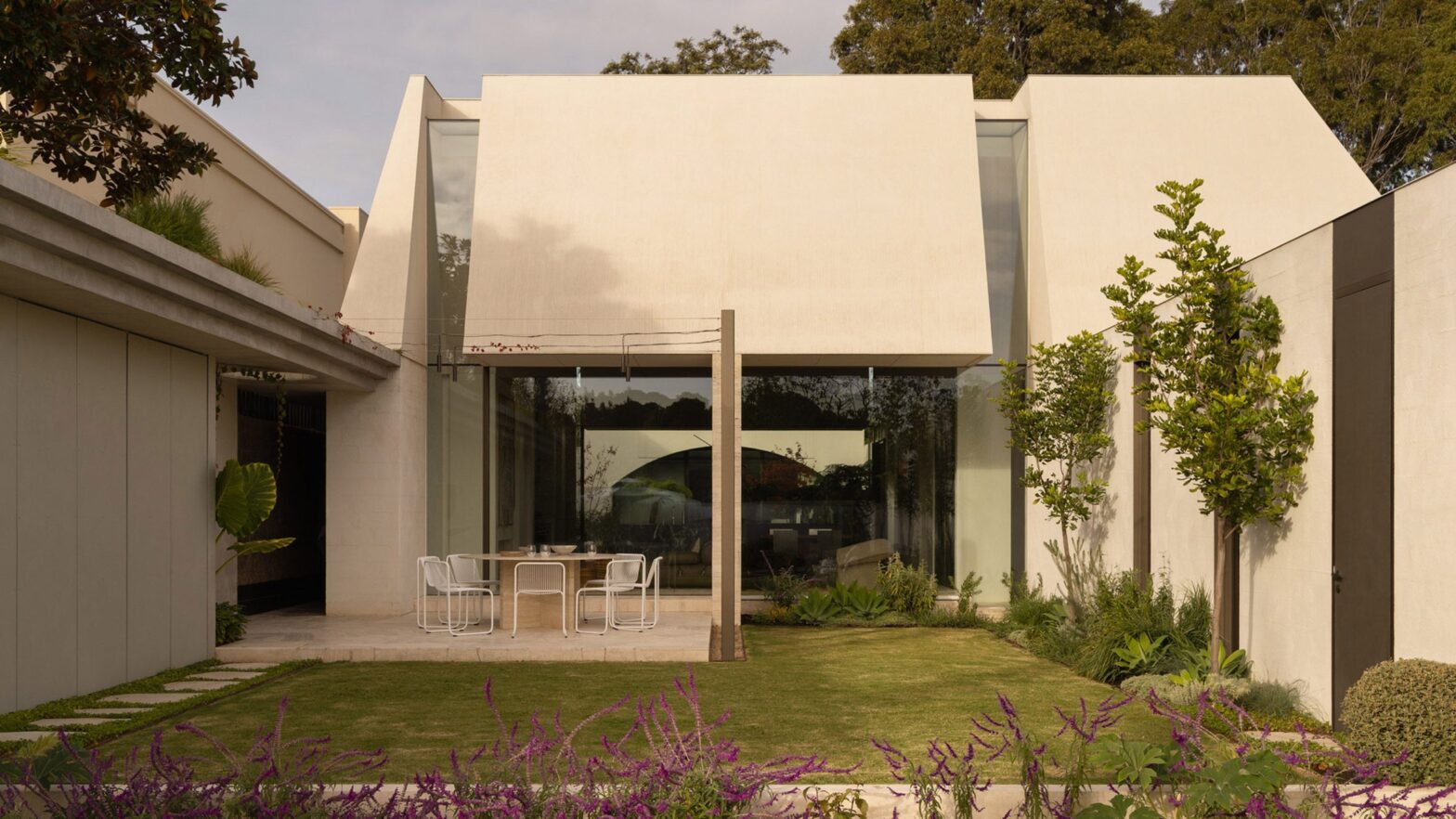Frameless glass surfaces punctuate the monolithic, angular volumes of Temple House, a family home in Australia designed by local studio J Kidman Architecture with interior design firms Golden and Studio Tali Roth.
The single-storey house, called Temple House, was designed by J Kidman Architecture for a family of five on a deep and narrow site in the Melbourne suburb of Hawthorn.
The floor plan is organized around two garden courtyards which help to maximize light on this linear plot, creating an almost symmetrical floor plan.
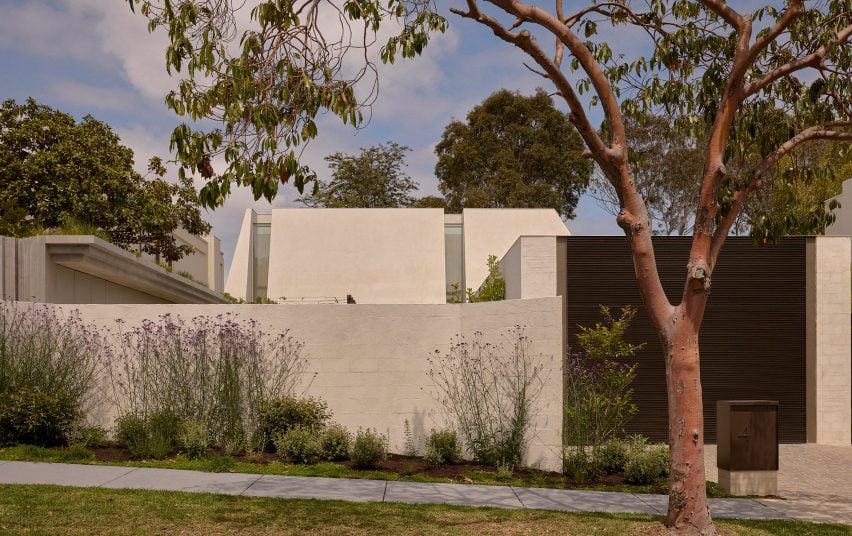
J Kidman Architecture founder James Reid likened this plan to that of a basilica or house of worship, coining both the name Temple House and the design of the “calm but powerful forms” that make up the house.
The idea of a temple also influenced the home's interiors and details, including Golden's designs for the bathrooms, which were recently shortlisted in the bathroom interiors category of the Dezeen Awards 2025.
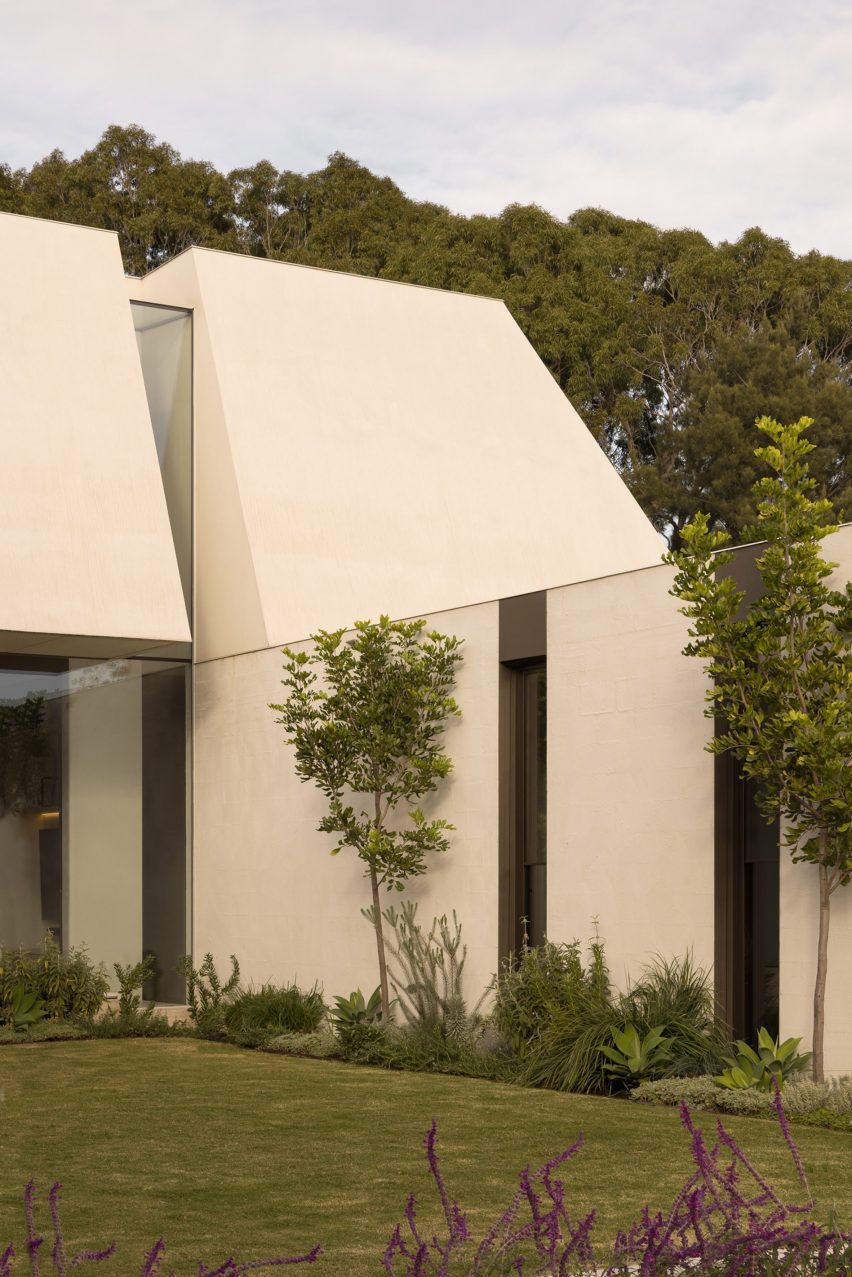
“Equivalent conditions to the atrium, narthex, aisles and nave of a cathedral or basilica, all in strong axial relationships, with a strong sense of ceremony and formality, the plan was really a sort of remixed basilica,” Reid said.
“So we followed this cue and moved from the shape of the building to the idea of a domestic temple, imagining a building with calm but powerful shapes that invite reflection,” he added.
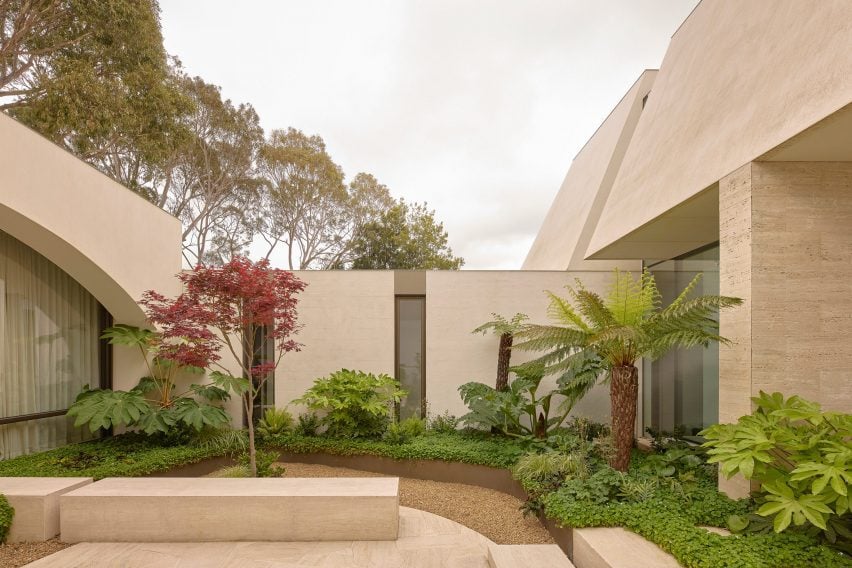
Entering the site via a side passage next to a garage, one sees a monolithic section of curved wall clad in ribbed limestone tiles. Behind it is an entrance hall with large openings in the corners that reveal the rooms behind.
A long corridor that forms an axis through the entire property leads to a double height living, dining and kitchen area to the east.

The living area is located under a large trapezoidal roof and overlooks two courtyards to the north and south through sliding glass doors and large frameless glazing that extend upwards to form a “lantern” in each corner.
The northern courtyard was designed by Plume Studio and ends in a geometric swimming pool accessed via a small moat. To the south, the master bedroom looks out through a large, arched opening onto the surrounding planting and bench seating.
Central sections of the stone wall on either side support the overhang of the house's large roof and divide the garden areas into seating and planting areas with steel columns and canopies designed to support climbing plants.
Externally, the house's geometric shapes have all been finished with light bagged brickwork to give them a subtly textured look.
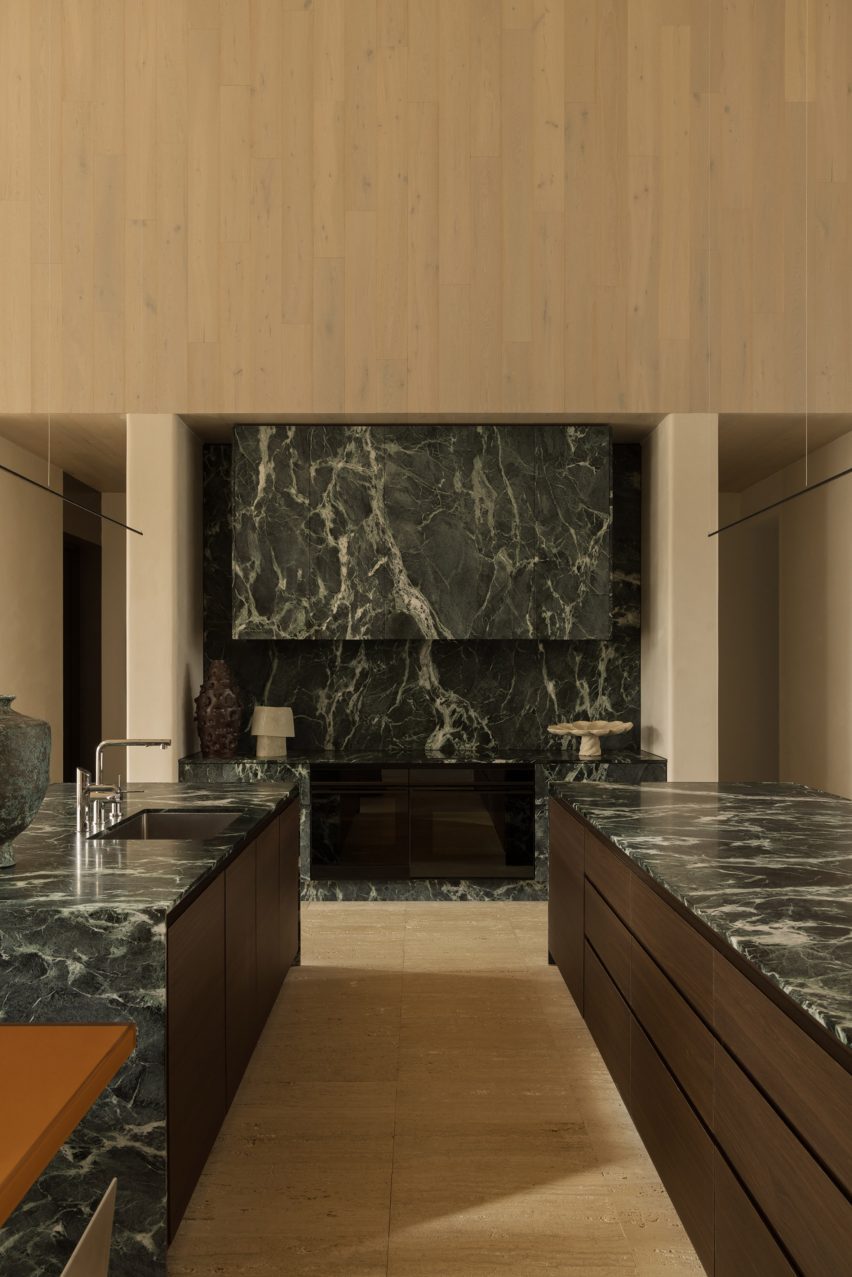
Interior design firms Golden and Studio Tali Roth concentrated the living space around a green marble kitchen flanked by a dark green modular sofa and a stainless steel dining table for up to 12 people.
“The brutalist nature of the materials chosen – stone, light wood and metals – and the ceiling heights could require a hostile and uninviting space,” Tali Roth, founder of Studio Tali Roth, told Dezeen.
“My job was to work with it and make it feel extremely inviting and cozy,” she added.
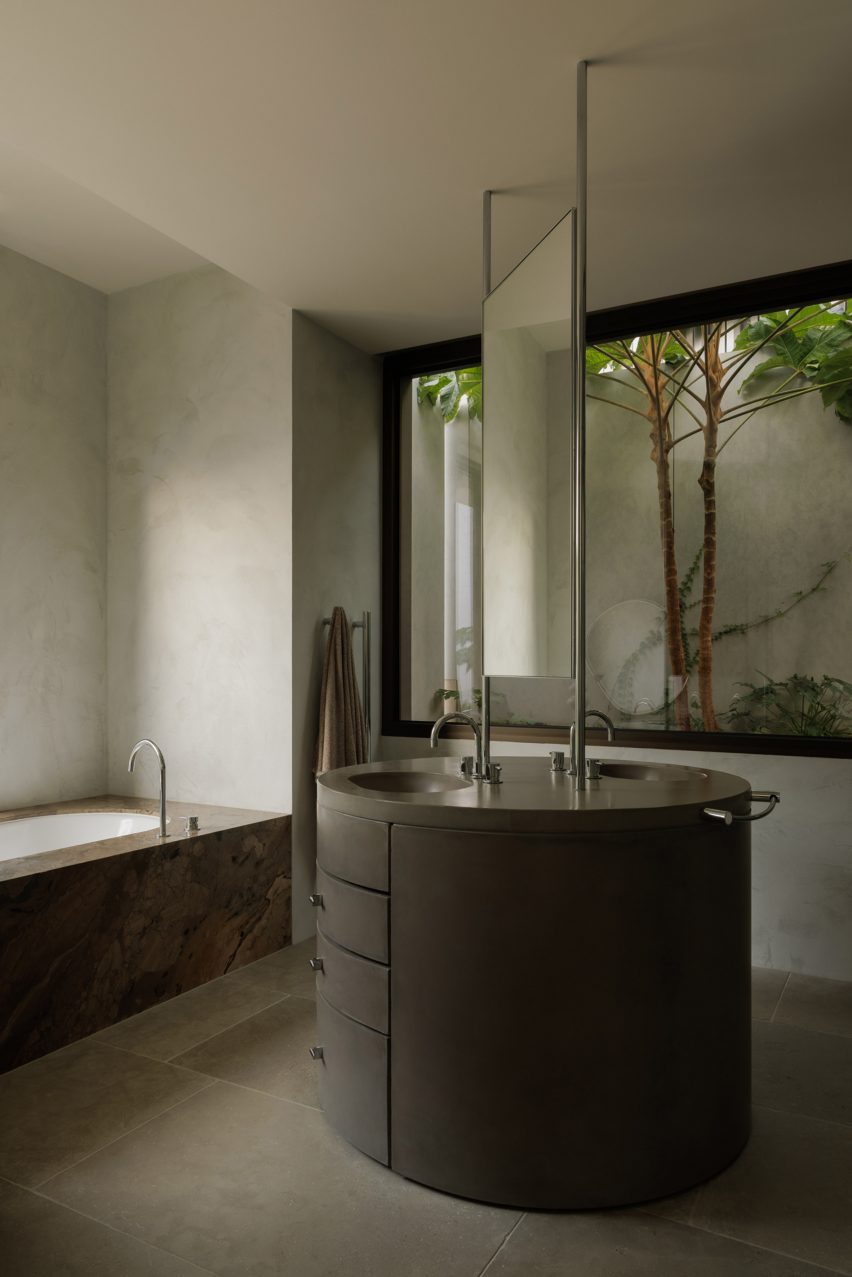
The house's smaller bedrooms are located at the southern end of the central corridor and at the northern end there is a study that can also be used as a guest room if required.
Other Melbourne homes recently featured on Dezeen include Studio Bright's Hedge and Arbor House, a raw log cabin encased in metal trellises for climbing plants, and a windowless bungalow by David Hicks.
Photography is by Timothy Kaye unless otherwise noted.
